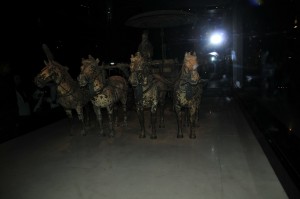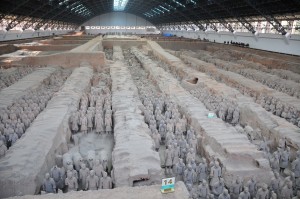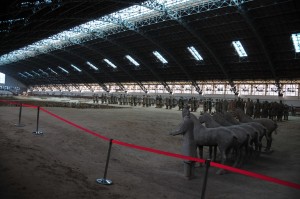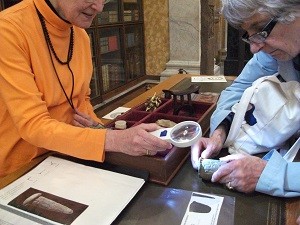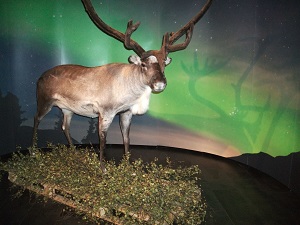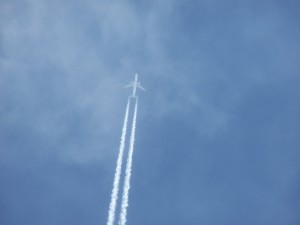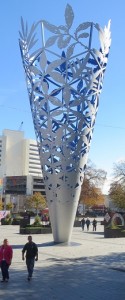Terracotta Warriors
August 13, 2015 by admin
Filed under Travel for everyone
Near China’s ancient capital of Xian, one can visit an army of terracotta soldiers.
Ready to travel back…way back? to the 3rd century BC?
Flying there from Bejing will take about two hours in the air.
Then join a guided tour (or if you are lucky enough to have friends in China, they may take you). A local guide will meet you at the airport and stay with you throughout your visit.
Aside: When traveling in China, most tours will have a local guide who will meet you at the airport, take you around during your stay in their area, and then return you to the airport. When you arrive at your next city, a different local guide will meet you and take you around.
Just do not try it on your own unless you speak the language or are very familiar with the country.
Okay, let’s go!
Welcome to the Museum of Qin.
The Emperor’s bronze chariot pulled by horses.
They look so real, don’t they.
(Click on any photo to enlarge it.)
We are in the funeral complex of the first Qin Emperor, Emperor Qin Shi Huang, who founded China’s first unified empire more than 2000 years ago.
Back in the third century BC, grave mounds were built as final resting places. In the case of Emperor Qin Shi Huang his grave mound covers a huge area, and is surrounded by numerous mounds (about two hundred!) containing life size soldiers, horses, chariots, weapons, etc.
A whole city underground...a whole city that lay undetected until 1974.
It was in 1974 that local farmers digging a water well uncovered materials that resulted in archaeologists investigating further. The enormous complex discovered is now on UNESCO’s World Heritage List.
Historians believe the complex was built to protect the Emperor in the afterlife.
Thousands of workers brought from all parts of the empire worked on the mausoleum for more than thirty years. (The mausoleum remains sealed, but parts of the surrounding digs are accessible to tourists.)
Each clay soldier was built using molds and then put together using an assembly line process.
Originally the clothes were colourful but during the digging the colours faded and/or chipped off when air came in contact with the paint.
Each clay figure is unique though…with detailed clothing designs, hair styles, etc. Historians feel the details are accurate for the time period, so here we are looking at a treasure trove of history.
Most impressive to me is that each figure is a distinctive person with unique facial features.
Facial features…perhaps the features of the workers or real soldiers of the day…have been studied using ear recognition of all things! Apparently each person’s ear is unique, just as fingerprints are. The conclusion of the study is that the ears of a sampling of the terracotta figures are unique to each statue and are representative of a general population.
There are many wonderful websites documenting the archaeological work done here. Do check some of them out.
I would recommend watching the National Geographic video that was released during a world tour of an exhibition of terracotta soldiers.
Here at the Museum of Qin, terracotta soldiers and horses are protected under a huge dome.
Visit more of China, click here.
and/or
Visit other countries, click here.
Happy travels!

